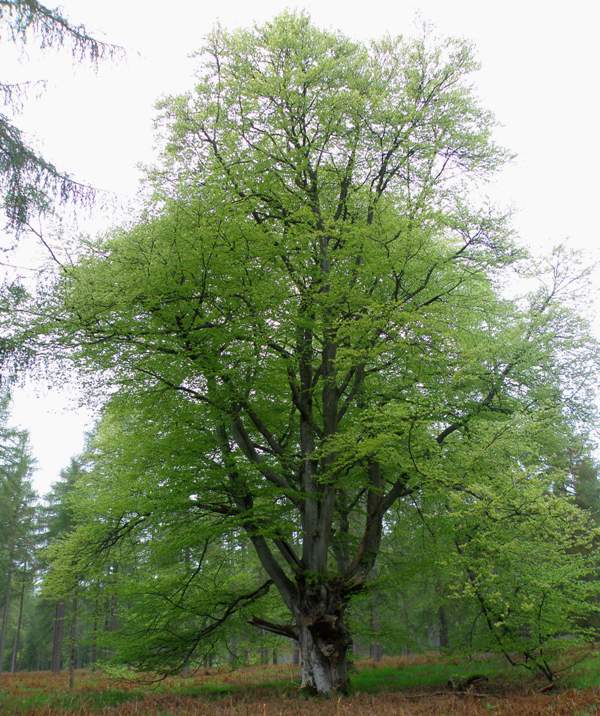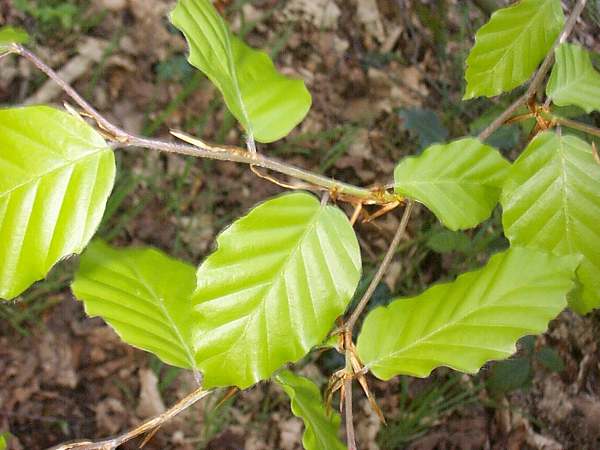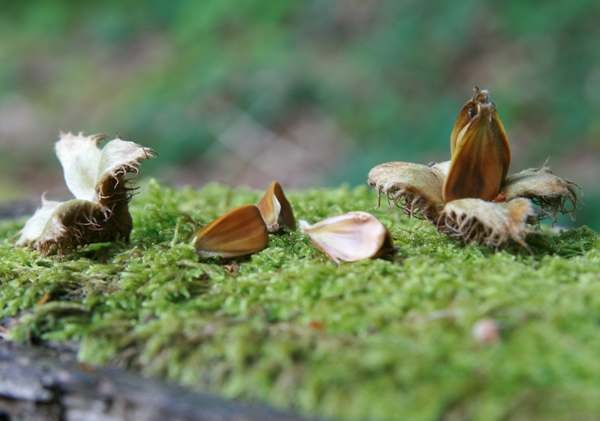Trees Birds Mammals Fish Amphibians Reptiles
Wild Algarve
Bookshop
Fagus sylvatica - Beech
Phylum: Magnoliophyta - Class: Magnoliopsida - Order: Sapindales - Family: Fagaceae

Beech trees are attractive throughout the year. In early spring their red,
pointed buds open to reveal bright green leaves, which darken through May,
June and July. These majestic trees often retain their leaves long after
they have turned from green to brown, and beech hedges are therefore also
quite popular. Beech trees can reach a spread of 30 metres and are usually
rather taller than their spread.
Wood from beech trees is used in furniture making,
particularly as chair legs; it is also used for making wooden cooking
utensils.
Beech leaves are a lovely sight in springtime, as they change through
many shades of green. In April and May the flowers appear, and in autumn
the fruits, known as beech mast, ripen and burst to reveal three brown
nuts within each 'mast'.

Leaves of Fagus sylvatica

Male flowers

Female flowers

Beech mast
Fungi associated with Beech trees
Many beautiful fungi are mycorrhizal (live in cooperative
conjunction with the roots of) beech trees, because the slow-rotting
leaves prevent dense undergrowth from taking over, and so beechwoods, which are concentrated in the south of England and Southeast Wales, are particularly productive venues for fungus forays.

Russula nobilis, the Beechwood Sickener, is a mycorrhizal mushroom whose red caps push up through leaf litter beneath Beeches. As its common name implies, eating this mushroom results in very unpleasant consequences, including vomiting. A similar mushroom, known as the Sickener, grows under conifers and is also a cause of mushroom poisoning.
Commonly referred to as the 'brittlegills', Russula fungi are notoriously difficult to identify, and microscopic characters and reactions to chemical testing are often necessary.

Oudemansiella mucida, the Porcelain Fungus, is a saprophytic mushroom found almost exclusively on dead or dying Beech trunks and branches. This most translucent of white fungi is also weakly parasitic on living Beech trees, where it fruits on the trunk and large branches often high up in the crown of the tree; from there these mushrooms are occasionally detached by the wind so that they descend very much like miniature parachutes - a surprising sight if you are not expecting it!